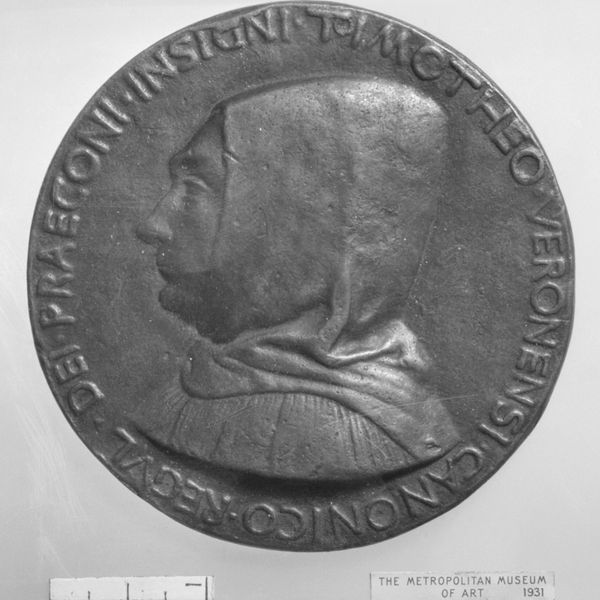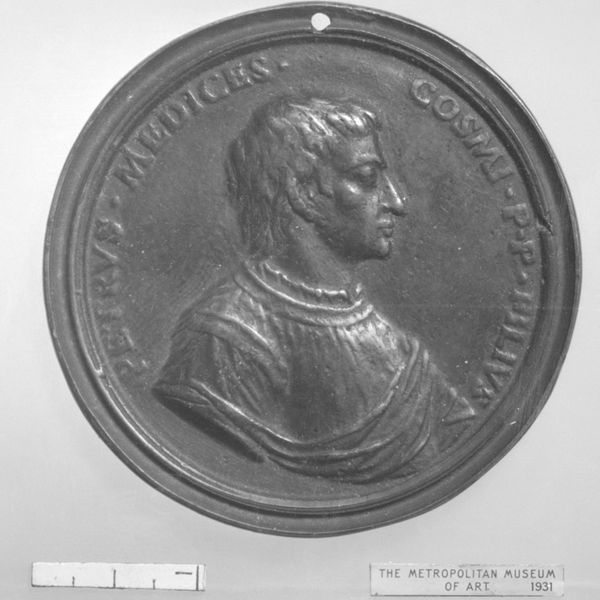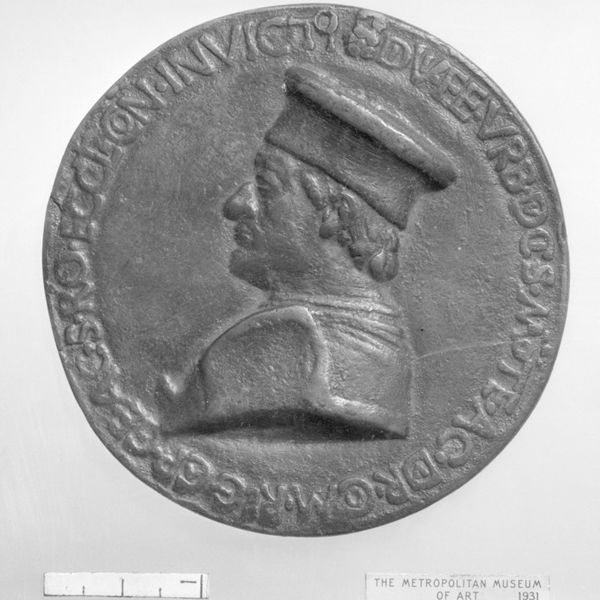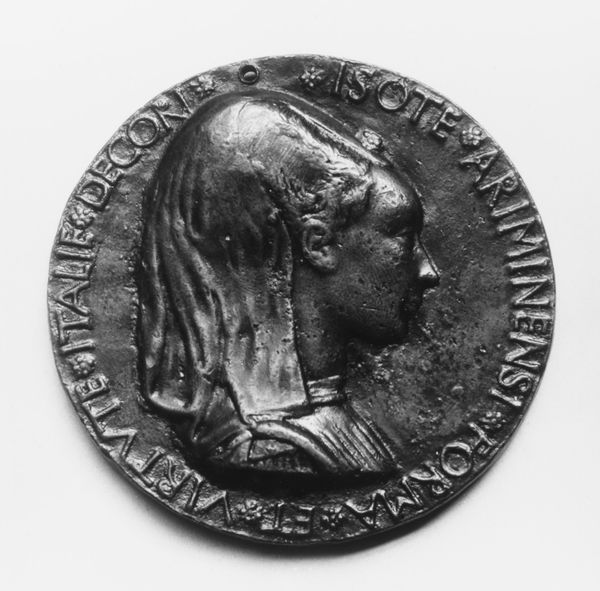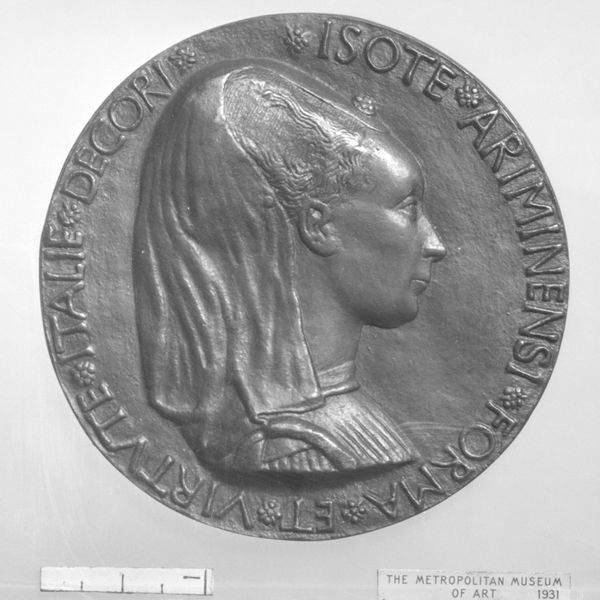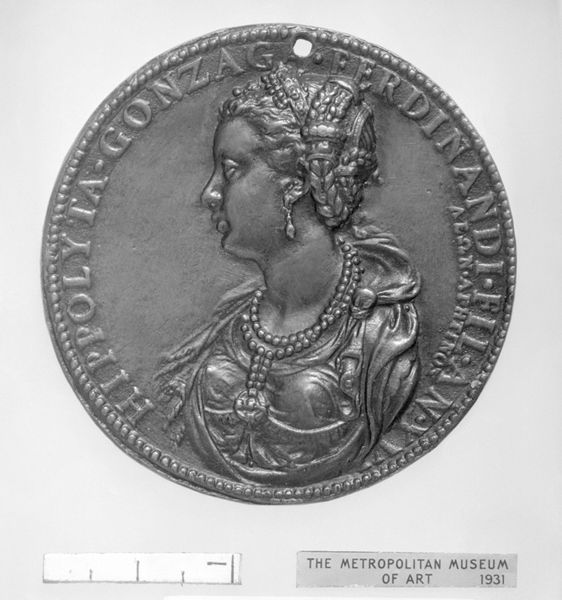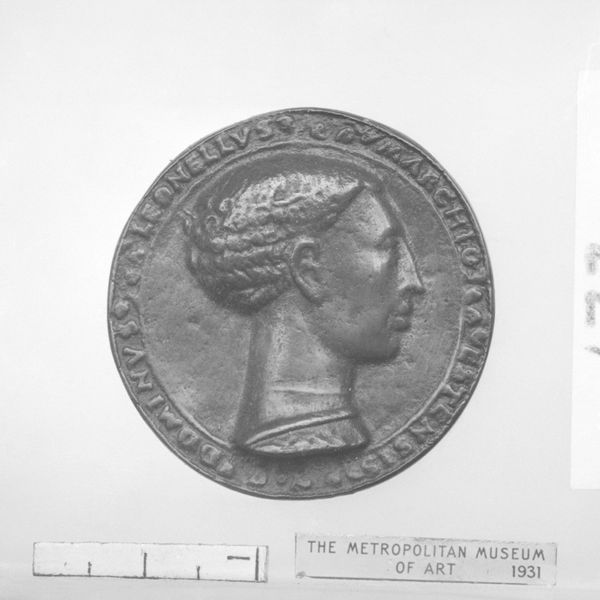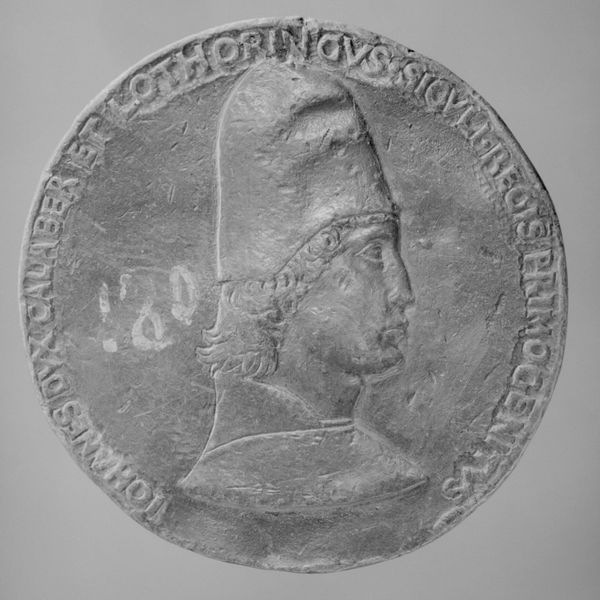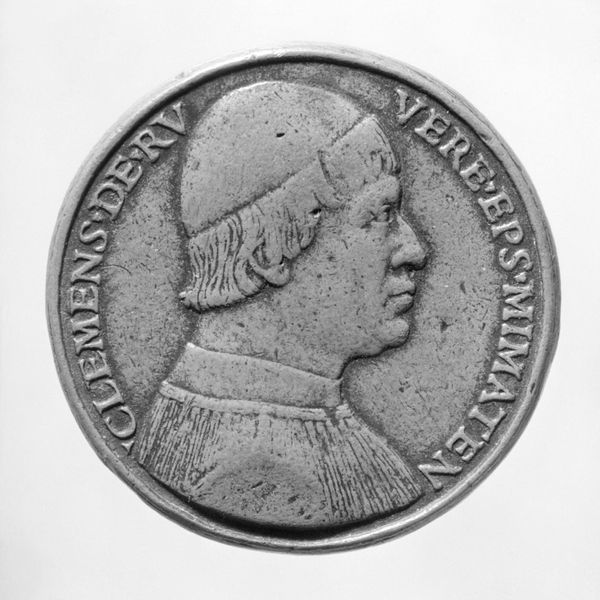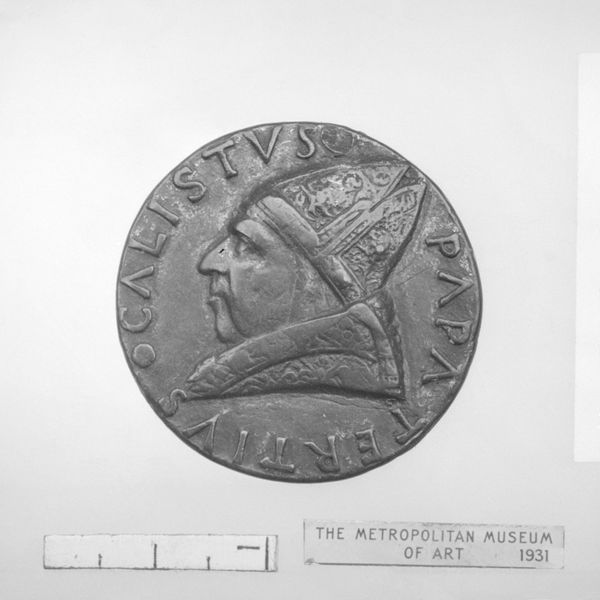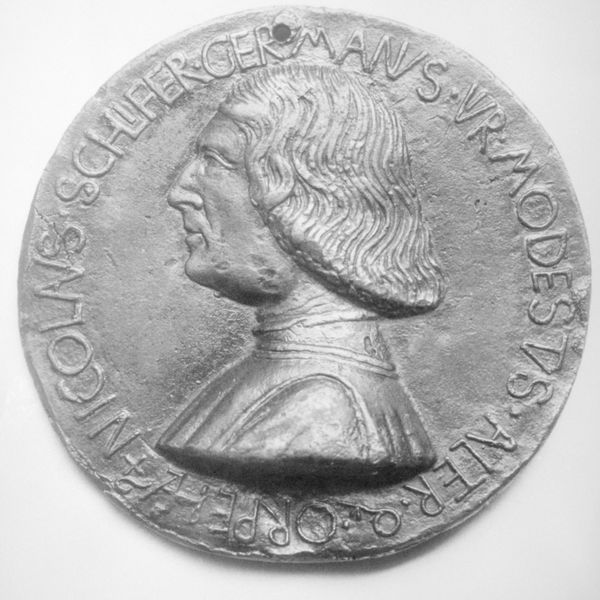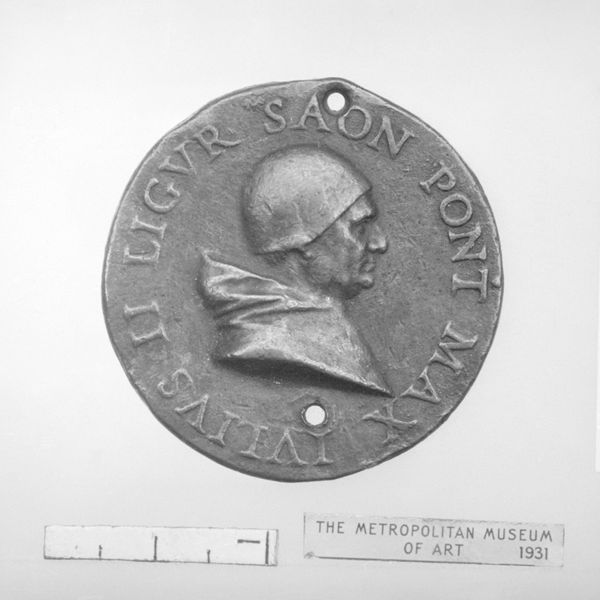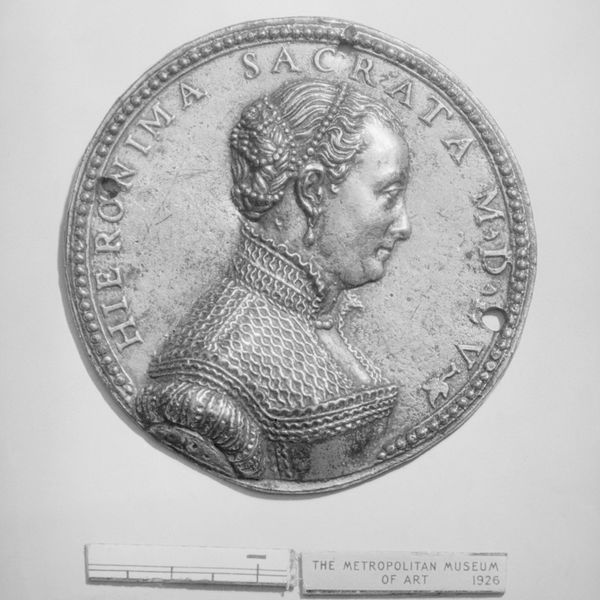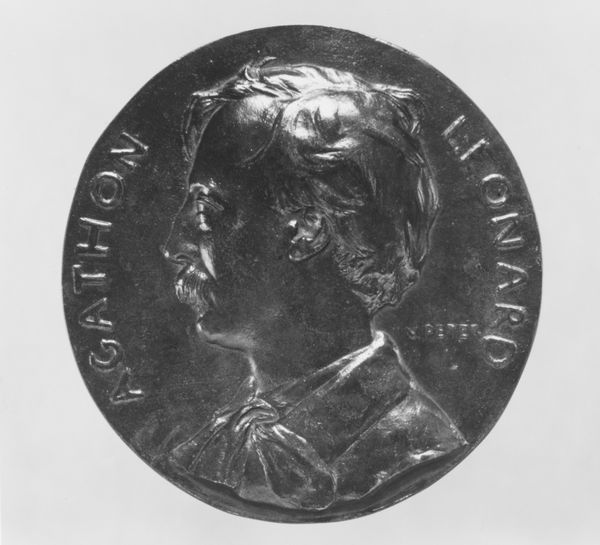
Leonello d'Este, Marquis of Ferrara (1407–1450) 1436 - 1449
0:00
0:00
relief, bronze, sculpture
#
portrait
#
medal
#
sculpture
#
relief
#
bronze
#
sculpture
#
decorative-art
#
italian-renaissance
#
profile
Dimensions: Diameter: 89 mm
Copyright: Public Domain
Curator: Here we have Pisanello’s bronze relief, “Leonello d’Este, Marquis of Ferrara (1407–1450),” likely created between 1436 and 1449. Editor: The profile view has a stoic feeling to it, almost a little cold, doesn't it? Yet, there's undeniable refinement in the crafting. It’s austere yet exquisite. Curator: Right, let's consider how this image functions within its social context. The Este family were significant patrons of the arts and wielded immense political power. The medal form itself serves as propaganda. Editor: Absolutely, the Renaissance obsession with portraying power dynamics makes these sorts of pieces so compelling. How is Leonello communicating his status through his clothes, his image, and even his surroundings in the piece? Curator: Well, note the material: bronze, not a cheap material by any means! But further, think of the labour that went into creating the mould, casting the piece, and refining it. Also, notice that text circumscribing his image; even this functions as both decoration and as pronouncement of his leadership. Editor: What fascinates me is the simultaneous upholding and subversion of certain power structures. While Leonello sought to present himself in this rarefied air of courtly authority and magnificence, Renaissance Florence also enabled spaces of creative license and fluidity with respect to gender identity and sexual expression, particularly for certain privileged men. I wonder if, and how, we can see traces of such contradictions here? Curator: That’s interesting. Looking at the laurel leaves, for instance, we often ascribe victory or prestige, yet those symbols are often appropriated, repurposed, and recycled within systems of power that extend beyond simple militaristic notions. In this image, what statement about the Marquis does it attempt to make? Editor: It reminds us that these medals, like many portraits of the period, are laden with messages far beyond their function as keepsakes. The creation, circulation, and display of an artwork such as this actively participate in constructing personal and political meaning in Early Renaissance Italy. Curator: Indeed. By examining the intersection of art, history, and social dynamics, we can understand a portrait not as a frozen historical relic but as an entry point to understanding social power during that era. Editor: Thanks for enriching our reading of Pisanello’s portrayal of Leonello! I am left musing on how social position intersects with individual identity when we make and receive art.
Comments
No comments
Be the first to comment and join the conversation on the ultimate creative platform.
